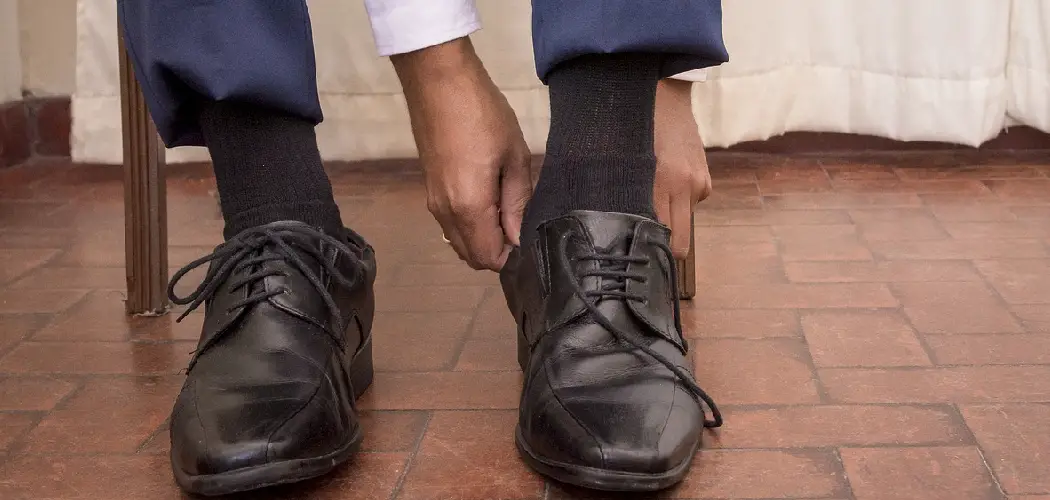It’s happened to all of us. You buy a new pair of shoes, and the first time you wear them, they rub your heel raw. It’s so frustrating, especially when you love the style of the shoes and don’t want to give up on them. So what do you do? Here are a few tips on how to break in shoes that rub your heel.
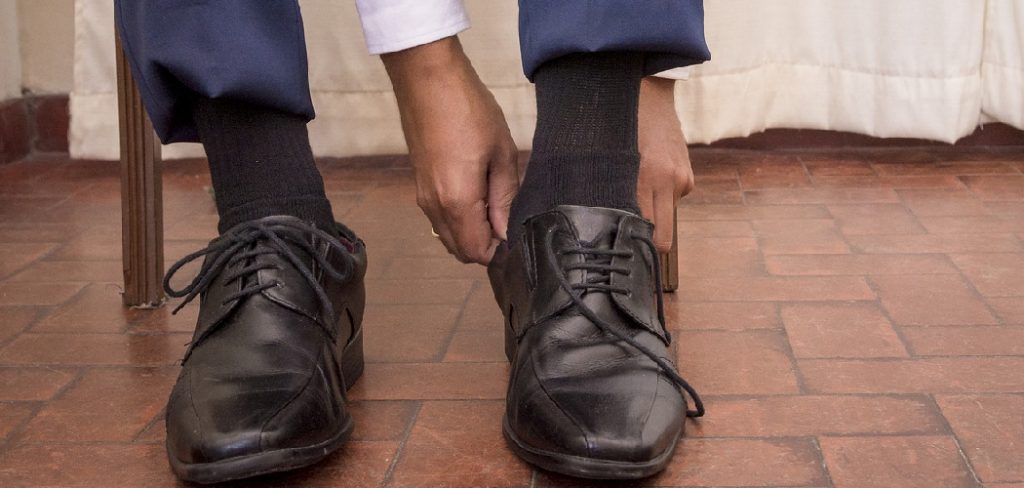
Summary: Breaking in shoes that rub your heel can be an annoying process. To make it easier, you should wear a thin pair of socks when you first put the shoes on and then inserts like Dr. Scholls or shoe trees can be used to keep the shoe shape and prevent your heel from rubbing against the sides.
You can also use a leather conditioner or lube to help with friction and pain. Blister pads are also great for this issue but should only be used if necessary since they tend to move around. Lastly, make sure you’re not wearing shoes that are too small – the correct size will ultimately solve the problem.
Why It’s Important to Break in Shoes that Rub Your Heel?
One of the most important reasons to break in shoes that rub your heel is to avoid developing blisters. Blisters can be excruciating and uncomfortable and can take a while to heal. Breaking in your shoes before wearing them for an extended period of time can help prevent this from happening.
Things You’ll Need
To break in shoes that rub your heel, you’ll need some rubbing alcohol or pure acetone if you have access to it. Rub the liquid gently on the inside lining of the shoe. You can purchase this from a drugstore or beauty supply stores like Ulta and Sephora.
- Shoes that rub your heel
- Tape
- Bandaids
How to Break in Shoes That Rub Your Heel Step by Step
Step 1: Choose the Right Pair of Socks
The first step to breaking in your shoes is to choose the right pair of socks. For example, if you’re going to be wearing your shoes with dress socks, you’ll want to buy a pair of dress socks that are slightly thicker than the average sock. This will help protect your feet from the rubbing that can occur when you first start wearing your shoes.
Step2: Shoe Stretcher Might Work for Your Heels
If your shoes are still stiff after breaking them in gradually, you might need to take more aggressive measures. For example, a shoe stretcher can help stretch out the heel area of your shoe so that it doesn’t rub as much. You can use a shoe stretcher on both new and old shoes.
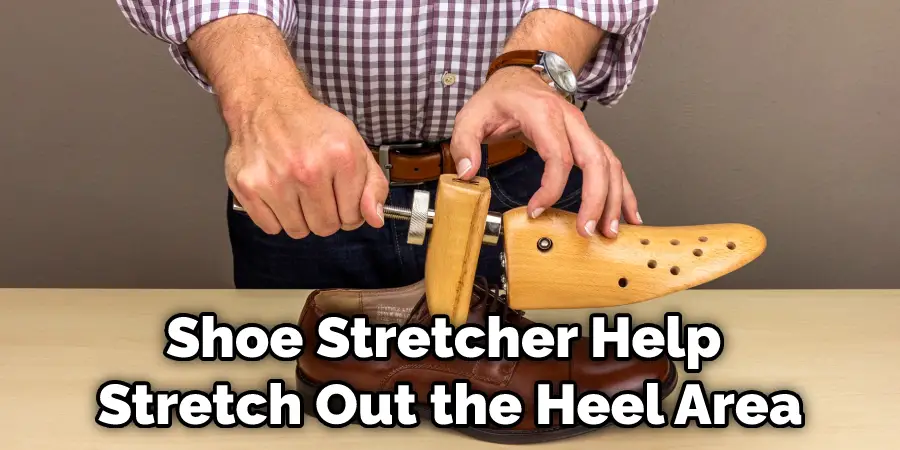
There are two main types of shoe stretchers: manual and electric. Manual stretchers are smaller, cheaper, and more portable. Electric stretchers are larger, more expensive, and require an outlet.
Step 3: Use Comfortable Insoles
If the shoes are still rubbing your heel after breaking them in, you can try using comfortable insoles. There are many different insoles on the market, so you should be able to find a pair that will help reduce the friction on your heels. Just make sure that the insole covers the entire bottom of the shoe; otherwise, it won’t do much good.
Step 4: Shoe Materials
This is important to choose the right material for your shoes. For example, if you have a leather pair of shoes, you can use mink oil to help soften the leather. You can also purchase heel grips that will help protect your heel and reduce the amount of rubbing. If you have a fabric pair of shoes, there are several things you can do to help reduce the rubbing.
You can try using a heel pad or insert to help cushion your heel, or you can try sewing a piece of fabric over the rubbing area. It is important to find a method that works for you and helps to keep your feet comfortable all day long.
Step 5: Reduce the Moisture in Your Shoes
If your shoes continue to rub your heel after following the previous steps, you may need to reduce the moisture in your shoes. One way to do this is by using a shoe dryer. Place your shoes in the dryer and set them to the lowest heat setting. The low heat will help reduce the moisture without damaging your shoes.
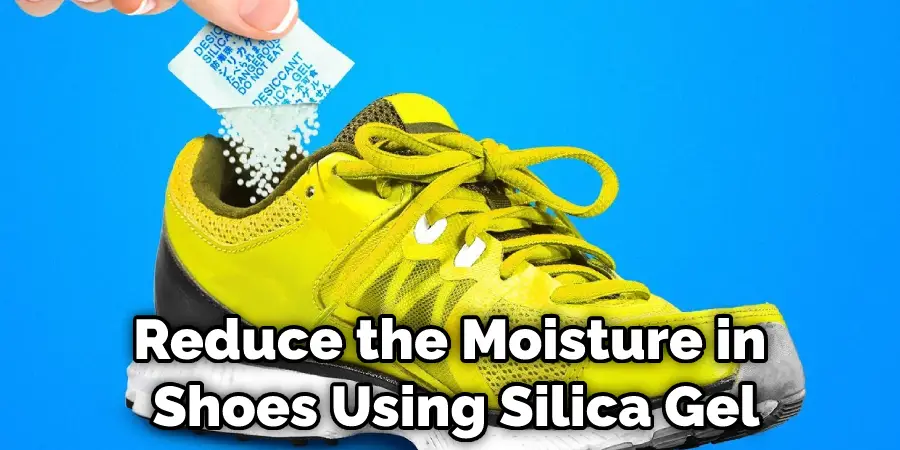
Another way to reduce the moisture in your shoes is by using silica gel packs. Place the packs inside your shoes and allow them to sit overnight. The gel packs will absorb the moisture from your shoes, making them more comfortable.
Step 6: Stretching Your Shoes Can Solve the Problem
If you have already tried the aforementioned methods and your shoes are still rubbing your heel, then it might be time to stretch them out. There are a few different ways to do this, but one of the easiest is to fill up a plastic bag with water and place it in your shoes.
Then, please put them in the freezer. As the water freezes, it will stretch out your shoes. You can also use a hairdryer to stretch them out. Point the hairdryer at the tight spots on your shoes and heat them. This will cause them to expand, and the shoes should now fit comfortably.
Step 7: Cobbler Can Stretch Your Shoes
If you have a cobbler in your area, you can take your shoes to them and ask them to stretch the backs of your shoes. This is a common service that cobblers provide, and it should only cost a few dollars. If you don’t have a cobbler in your area or don’t want to pay for the service, you can try stretching the shoes yourself. You’ll need a pair of thick socks, a blunt object (like a chopstick or a pen), and some tape.
Step 8: Check for Sharp Edges
Sometimes, shoes can have sharp edges that can rub and cause blisters. To check for these, put the shoe on and walk around in it. If you feel any sharp edges or areas rubbing your heel, take sandpaper to them until they are smooth. Be careful not to take off too much material, as you don’t want the shoe to be too loose.
Step 9: Use an Anti-Friction Balm
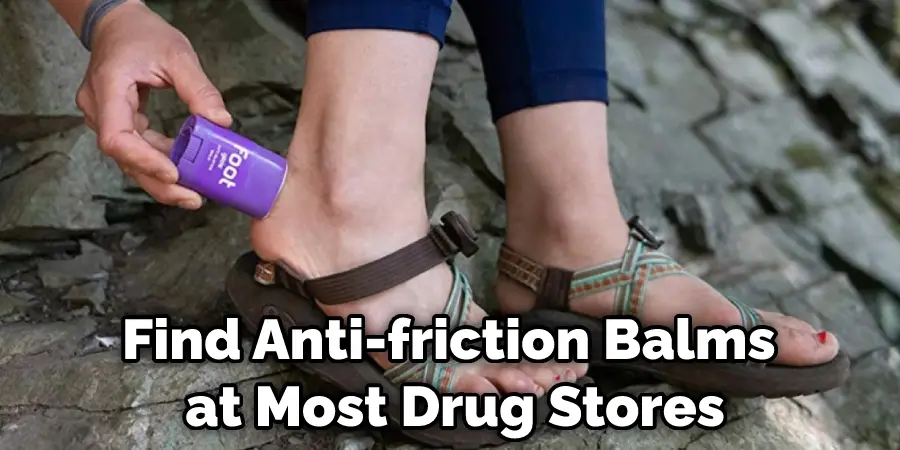
Another option to help break in your shoes is to use an anti-friction balm. This will help create a barrier between your skin and the shoe, which will help to prevent any rubbing. You can find anti-friction balms at most drug stores or sporting goods stores.
If you are experiencing heel rubbing, you may also want to try a different shoe size or style. Sometimes, certain shoes don’t work for certain people. It’s important to find a comfortable shoe that doesn’t rub your heel.
Step 10: Adding an Extra Layer
There are a couple of ways to add an extra layer to your shoes. First, you can either put on a pair of socks, tights, or an insole. If you have a thin pair of socks, put them on first and then put your shoes on over them. This will help the socks to absorb some of the rubbings.
Step 11: Walk in Your Shoes for Longer Periods of Time
If you’re having trouble breaking in your shoes and they continue to rub your heel, walk in them for longer periods. For example, put on a pair of socks and walk around your house for 30 minutes. If possible, do this several times a day. You can also try wearing them while doing other activities, such as grocery shopping or running errands. The more you wear them, the more comfortable they’ll become.
Step 12: Put a Band-Aid on the Heel
If you have tried all of the above methods and your shoes are still rubbing your heel, put a band-aid on the heel. This will help to protect the skin from being rubbed raw. Then, continue to wear the shoes until broken in, and the band-aid does not need to be worn anymore.
Step 13: Buy Some Gel Heel Liners
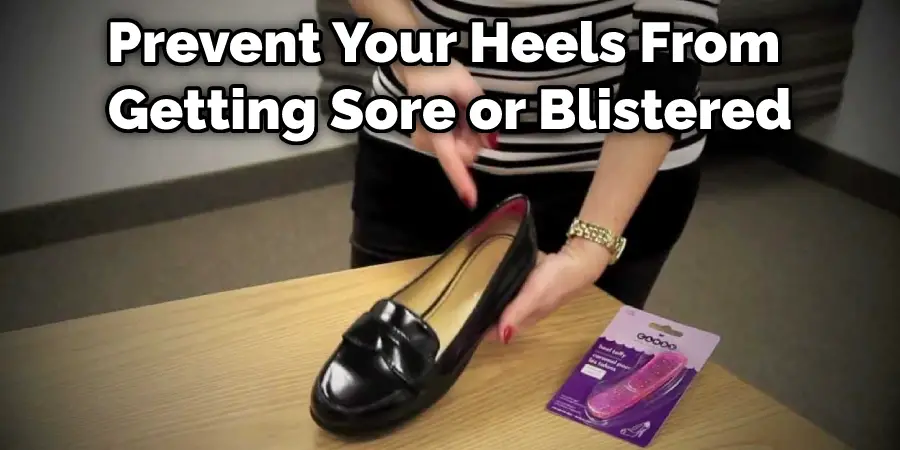
If your shoes continue to rub your heel, you may want to invest in some gel heel liners despite breaking them in as much as possible. These are thin pieces of silicone or foam that you insert into your shoes to provide more cushioning and protection for your heels. They can be a bit pricey, but they’re worth it if they prevent your heels from getting sore or blistered.
If you don’t want to spend the money on gel heel liners, you can try using moleskin instead. Moleskin is a type of fabric often used to prevent blisters and chafing. You can find it at most pharmacies or drugstores. Just cut a small piece of moleskin to fit over your heel and attach it to the inside of your shoe with double-sided tape.
If you’ve tried all of these steps and your shoes are still causing blisters, investing in a new pair might be time. Shoes that are properly fitted and comfortable should not cause any problems. However, if you’re still experiencing issues, talk to a podiatrist for more advice.
Now that you know how to break in shoes that rub your heel, you can start wearing them with peace of mind. Just follow these simple steps, and you’ll be good to go!
You Can Check It Out to Stop Shoe Heels From Wearing Down
Things to Remember During the Shoe Buying Stage
- Always try shoes on before buying them, even if you have a good idea of the size you wear. Sizes vary among brands and even between models of the same brand.
- Walk around in the shoes before buying them. If they feel uncomfortable when you walk, they’ll only be more painful when you wear them for extended periods.
- If the shoes are too tight, don’t buy them. It’s possible to stretch out slightly too small shoes, but it’s much harder to do so with shoes that are too tight.
- If the shoes rub your heel when you walk, don’t buy them.
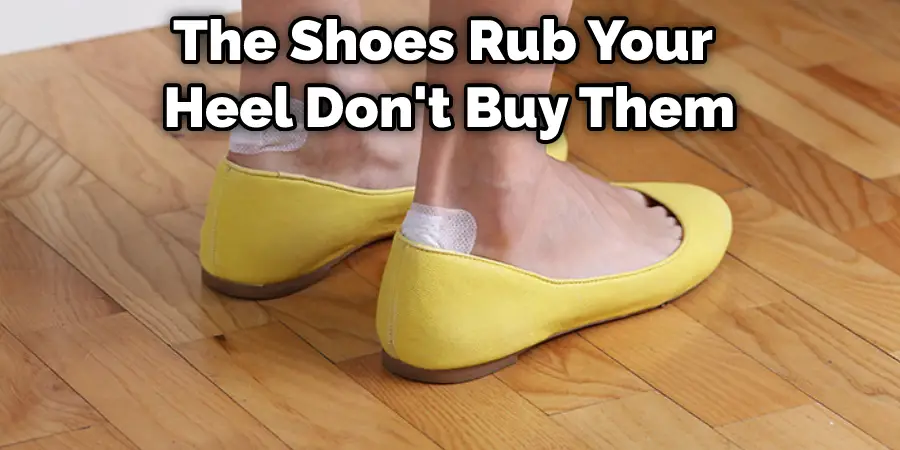
Why Are My Shoes Rubbing My Heels?
The Shoes Are Too Big
This is the most common reason for heel rubbing in shoes. In addition, when your shoes are too big, your feet slide around inside the shoes, which can cause a lot of friction and eventually lead to blisters.
The Shoes Are Too Small
Believe it or not, too small shoes can also rub your heels and cause blisters. This is because when the shoes are too small, they can’t conform to the shape of your feet, which can cause friction and rubbing.
The Shoes Are Old
Another reason your shoes might be rubbing your heels is if they are old and worn out. As for shoe age, the materials break down and lose their elasticity.
You Are Using the Wrong Shoes
If you are doing a lot of walking or running, you need to make sure you are wearing the right shoes. Wearing the wrong type of shoe for your activity can cause heel rubbing. Keep reading for more information about how to break in shoes that rub your heel.
You Can Check It Out to Stop Shoes Rubbing the Back of Your Heel
What to Put on Heels to Prevent Blisters?
You can do a few different things to help prevent blisters from forming on your heels when you’re breaking in new shoes. One is to apply moleskin to the areas of your feet that are most likely to rub. Another is to wear socks made from moisture-wicking material, such as wool or polyester.
This will help keep your feet from getting too sweaty and reduce the friction against your skin. Finally, you can try rubbing a small amount of Vaseline or petroleum jelly on your heels before putting on your socks and shoes. This will create a barrier between your skin and the fabric of your shoes, which will help to prevent blisters.
You Can Check It Out to to Break in Cowboy Boots
Frequently Asked Question
Foot’s Shape and Size
The first step to take when finding shoes that don’t rub your heel is to know your foot’s shape and size. This will allow you to determine what shoe style will work best for you and how to adjust the fit if necessary. Next, you can trace your feet onto a piece of paper or use a tape measure to get an accurate measurement.
Does Vaseline Stop Shoes Rubbing?
There is no definitive answer to this question as each person’s feet are different. However, some people find that applying a thin layer of Vaseline to their shoes’ heels can help prevent them from rubbing. If you decide to use Vaseline, be sure to test it out on a small area of your shoe first to ensure that it does not cause the shoes to become too slick.
Why Do New Shoes Hurt?
There are a few reasons why new shoes might hurt your feet. Shoes that are too tight can cause pain around your heels and toes. Shoes too loose can also cause pain since they can move around on your feet and cause blisters. In addition, if the shoe material is not soft enough, it can rub against your heels and cause pain.
Why Do Shoes Always Give Me Blisters?
There are a few reasons why shoes might give you blisters. One reason is that the shoes might be too tight, and they’re rubbing against your heel. Another reason is that the shoes might not be made of the right materials, and they’re not absorbing the sweat and moisture from your feet. Finally, the shoes might not be broken in yet, and they’re still stiff.
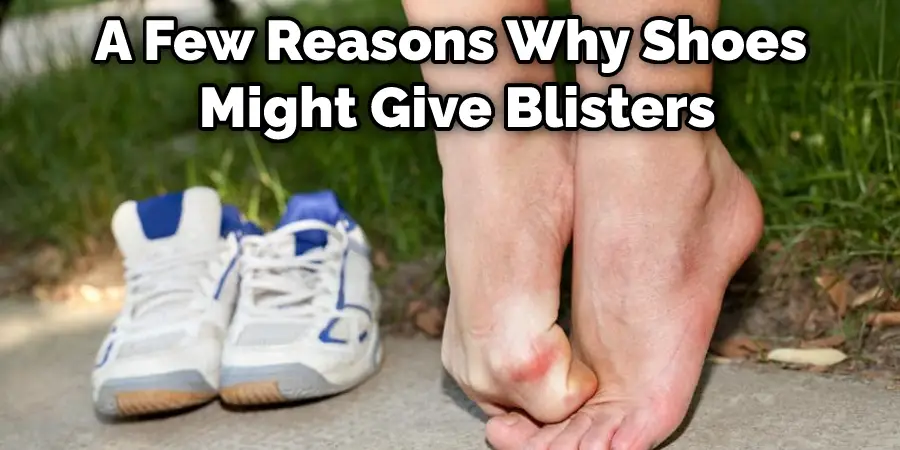
Conclusion
You can break into your shoes more quickly and without too much pain by following these simple tips. Just be patient, and before you know it, your new shoes will be just like old ones. Do you have any other tips for breaking in shoes? Please share them with us in the comments below! Thanks for reading our post about how to break in shoes that rub your heel.
You May Also Read: How to Break in Basketball Shoes

